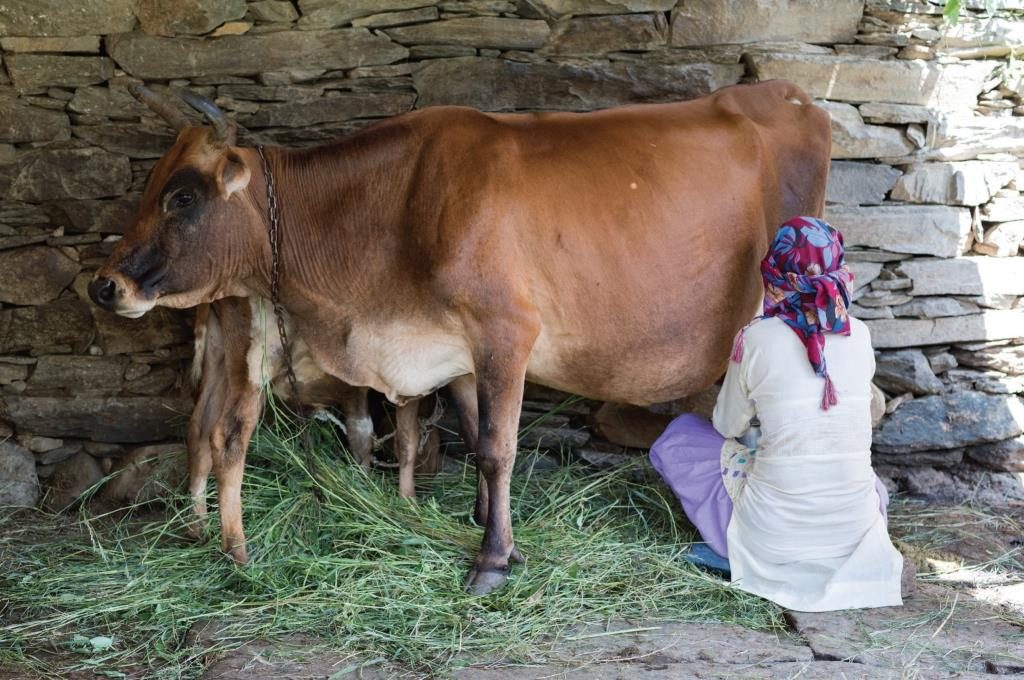
A: Extending any initiatives to the dairy industry will improve backward integration, but what is more important for the industry is educating farmers – today, most of the small and marginal farmers are not educated or well informed regarding schemes and thus they are not able to understand the real benefits of any schemes; the only thing farmers understand is ‘subsidy’. For example, Karnataka has seen record milk production despite benign milk prices, as farmers get a subsidy of Rs 5 per litre from Nandini (the state’s milk co-operative society), thereby fetching them higher realisations. In the long run, this model (of various state governments) may prove harmful to the interests of the private dairy sector and could adversely impact the entire sector. Generally, farmers treat milk production as a side business. If the government schemes are implemented well, the quality and quantity of milk can be improved.
Milk and milk products is a big business — and there is lot of scope, even for new entrants. Roughly, the organised market is one-third of the total dairy market and growing at double digits. Private dairy companies alongwith cooperatives are doing well in procurement of milk; however they are lagging behind cooperatives in Gujarat, given the dominant presence of Amul.
Private dairy companies despite paying more (procurement, marketing) managed to have healthy growth due to efficient and effective management. However, earning very high margins (mid-teens, similar to FMCG companies) is not feasible in the dairy business, since cooperatives (key competitors) are okay with low single-digit margins. Private sector players need to keep reasonable expectations and focus on innovation, quality, and premiumization to drive growth.

A: Once private dairy companies move out of their established regions, they face competition from local cooperatives and other regional players who have stronger footing in those markets. To make their presence felt, private dairies are taking over established plants in other parts of the country. For example – Heritage, after acquiring Reliance’s dairy business, is seeing a good market in Delhi- NCR; Lactalis has taken over Anik in Dewas. In unchartered territory, agents are more powerful since farmers’ entire milk procurement is dependent on the whims of agents (in the absence of any strong dairy player). Private dairies can win the game by providing better veterinary services, giving high-quality cattle feed, and ensuring 100% milk collection despite excess supply.
A: In the dairy business, most categories face the issue of a short shelf life, which can be circumvented by opting for UHT processing, regional presence for procurement, and an effective cold chain mechanism, among other things.
A: MNCs entering the Indian markets face a limitation – they cannot launch a product pan- India with massive volumes because they face competition from large cooperative players such as Amul, Mother Dairy, and Nandini. They face issues at both ends of the business — in establishing a direct procurement network to ensure steady quality, and in setting up a pan-India network to sell their products. These MNCs are not interested in selling low-margin plain milk and have struggled for years to taste success in the Indian market, because scale will not come merely from value-added products like yoghurt or cheese. On the procurement side, they have to pay higher rate (per litre) or at least match the amount paid by cooperatives, so that they secure enough supply from farmers. With a higher operating cost structure and higher procurement costs, the business viability of the MNCs goes for a toss. Danone recently exited the dairy business due to premium pricing (30-40%) higher than Amul, whose quality is at par with Danone. Danone also used the ‘direct reach’ channel for distributing its products, which proved expensive for the company, as it had to use cold-chain facilities throughout its distribution network (i.e., from the plant to the retailer). The general practice is to use cold chain from the plant to the distributor; the distributor then delivers products to retailers using insulated vehicles.
A: MNCs are already involved in milk procurement. Nestle in Punjab and Haryana and Heinz in Uttar Pradesh have already started direct procurement. However, direct procurement remains low for these players due to: (1) extensive manpower required at the ground level to ensure steady supply of high-quality milk, and (2) with the valueadded segment yet to pick up, but MNCs are still not interested in selling plain milk. Like private dairies, MNCs face competition from cooperatives, who sometimes give higher subsidies; they also face competition from regional players when it comes to product launches and procurement.
1. Educating farmers on schemes and productivity is of the utmost importance.
2. Availability of veterinary doctors and livestock supervisors that are interested in cattle. Providing them better quality feed.
3. Milk procurement throughout the year (without a single day’s break) and ensuring payments are made within a week of procurement.
Subscribe to enjoy uninterrupted access